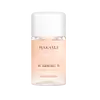What's inside
What's inside
 Key Ingredients
Key Ingredients

 Benefits
Benefits

 Concerns
Concerns

 Ingredients Side-by-side
Ingredients Side-by-side

Triethylhexanoin
MaskingPEG-20 Glyceryl Triisostearate
EmollientPolysorbate 80
EmulsifyingMicrocrystalline Wax
Emulsion StabilisingOzokerite
Emulsion StabilisingCymbopogon Schoenanthus Oil
MaskingButyrospermum Parkii Butter
Skin ConditioningMoringa Oleifera Seed Oil
EmollientLimnanthes Alba Seed Oil
Skin ConditioningMacadamia Integrifolia Seed Oil
Skin ConditioningCeramide NP
Skin ConditioningPhytosphingosine
Skin ConditioningGlycerin
HumectantHydrogenated Lecithin
EmulsifyingXanthan Gum
EmulsifyingButylene Glycol
HumectantGlucose
HumectantSodium Hyaluronate
HumectantChondrus Crispus Extract
Skin ConditioningHydroxypropyltrimonium Hyaluronate
Hydrolyzed Hyaluronic Acid
HumectantSodium Acetylated Hyaluronate
HumectantHyaluronic Acid
HumectantSodium Hyaluronate Crosspolymer
HumectantHydrolyzed Sodium Hyaluronate
Skin ConditioningPotassium Hyaluronate
Skin Conditioning1,2-Hexanediol
Skin ConditioningCaprylyl Glycol
EmollientTocopheryl Acetate
AntioxidantTriethylhexanoin, PEG-20 Glyceryl Triisostearate, Polysorbate 80, Microcrystalline Wax, Ozokerite, Cymbopogon Schoenanthus Oil, Butyrospermum Parkii Butter, Moringa Oleifera Seed Oil, Limnanthes Alba Seed Oil, Macadamia Integrifolia Seed Oil, Ceramide NP, Phytosphingosine, Glycerin, Hydrogenated Lecithin, Xanthan Gum, Butylene Glycol, Glucose, Sodium Hyaluronate, Chondrus Crispus Extract, Hydroxypropyltrimonium Hyaluronate, Hydrolyzed Hyaluronic Acid, Sodium Acetylated Hyaluronate, Hyaluronic Acid, Sodium Hyaluronate Crosspolymer, Hydrolyzed Sodium Hyaluronate, Potassium Hyaluronate, 1,2-Hexanediol, Caprylyl Glycol, Tocopheryl Acetate
Water
Skin ConditioningPoloxamer 184
EmulsifyingPhenoxyethanol
PreservativePEG-7 Glyceryl Cocoate
EmulsifyingSorbitol
HumectantDecyl Glucoside
CleansingPropylene Glycol
HumectantDisodium EDTA
Lactobacillus
Skin ConditioningAloe Barbadensis Leaf
MaskingSodium Hyaluronate Crosspolymer
HumectantSodium Hyaluronate
Humectant1,2-Hexanediol
Skin ConditioningSodium Acetylated Hyaluronate
HumectantHyaluronic Acid
HumectantHydrolyzed Glycosaminoglycans
HumectantHydrolyzed Sodium Hyaluronate
Skin ConditioningHydrolyzed Hyaluronic Acid
HumectantWater, Poloxamer 184, Phenoxyethanol, PEG-7 Glyceryl Cocoate, Sorbitol, Decyl Glucoside, Propylene Glycol, Disodium EDTA, Lactobacillus, Aloe Barbadensis Leaf, Sodium Hyaluronate Crosspolymer, Sodium Hyaluronate, 1,2-Hexanediol, Sodium Acetylated Hyaluronate, Hyaluronic Acid, Hydrolyzed Glycosaminoglycans, Hydrolyzed Sodium Hyaluronate, Hydrolyzed Hyaluronic Acid
Ingredients Explained
These ingredients are found in both products.
Ingredients higher up in an ingredient list are typically present in a larger amount.
1,2-Hexanediol is a synthetic liquid and another multi-functional powerhouse.
It is a:
- Humectant, drawing moisture into the skin
- Emollient, helping to soften skin
- Solvent, dispersing and stabilizing formulas
- Preservative booster, enhancing the antimicrobial activity of other preservatives
Hyaluronic acid is naturally found in healthy skin. It is a humectant, meaning it draws moisture to your skin.
This ingredient helps hydrate, soothe, and protect the skin.
What makes hyaluronic acid so hydrating? It has the capacity to bind or hold large amounts of water.
Fun fact: It is already naturally found in our bodies, such as the fluids of our eyes and our joints.
Studies find this ingredient to have anti-inflammatory and anti-microbial properties. This can help speed up wound-healing.
Hyaluronic acid can be irritating if the molecule has a low-molecular weight, or if the molecules are small.
One study found low-molecular weight hyaluronic acid to be pro-inflammatory, meaning some people may experience irritation. This is because our bodies use hyaluronic acid in the wound-healing process to signal to our bodies, via irritation, that something needs healing.
The same study found high-molecular weight hyaluronic acid to be anti-inflammatory.
These are some other common types of Hyaluronic Acid:
Learn more about Hyaluronic AcidHydrolyzed Hyaluronic Acid is a form of hyaluronic acid. It is created by the hydrolysis of hyaluronic acid with a high molecular weight. Once created, Hydrolyzed Hyaluronic Acid has a low molecular weight.
Low molecular weight HA has been shown to hydrate and increase elasticity of the skin. Increasing elasticity is also associated with reduction of wrinkle depth.
One study found topical low molecular weight hyaluronic acid may be considered for the treatment of rosacea in the adult population. However, we always recommend speaking with a professional about your skin concerns.
Hyaluronic acids are a humectant. This means they draw moisture from the air. Hyaluronic acids help moisturize, soothe, and protect the skin.
Read more about other common forms of hyaluronic acid:
Learn more about Hydrolyzed Hyaluronic AcidThis ingredient is created by putting sodium hyaluronate through hydrolysis.
You might know this as 'mini' or 'ultra low-molecular weight' hyaluronic acid. The small molecule size means it is able to travel deeper in the skin.
According to studies, low molecular-weight hyaluronic acid can:
One study from 2011 found ultra-low weight HA to show pro-inflammatory properties. Another study from 2022 found it to downregulate UV-B induced inflammation.
Hydrolysis is a process of changing a molecule using water or enzymes.
This ingredient is water-soluble.
Learn more about Hydrolyzed Sodium HyaluronateSodium Acetylated Hyaluronate is a type of Hyaluronic Acid.
Hyaluronic Acids help moisturize, soothe, and protect the skin.
Read about common types of Hyaluronic Acid here:
Sodium Hyaluronate
Hydrolyzed Hyaluronic Acid
Hyaluronic Acid
Sodium Hyaluronate is hyaluronic acid's salt form. It is commonly derived from the sodium salt of hyaluronic acid.
Like hyaluronic acid, it is great at holding water and acts as a humectant. This makes it a great skin hydrating ingredient.
Sodium Hyaluronate is naturally occurring in our bodies and is mostly found in eye fluid and joints.
These are some other common types of Hyaluronic Acid:
Learn more about Sodium HyaluronateSodium Hyaluronate Crosspolymer is a type of hyaluronic acid. In fact, it is modified version of hyaluronic acid.
The structure of Sodium Hyaluronate Crosspolymer allows it to stay in the skin's top layer for a longer period of time. This allows for even more hydration and humectant action than hyaluronic acid.
These are some other common types of Hyaluronic Acid:
Learn more about Sodium Hyaluronate Crosspolymer